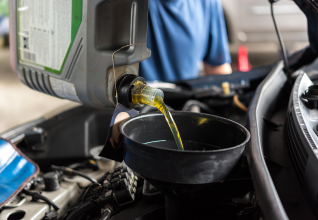Tired of paying for an oil change when your car needs one? Changing the oil in your car may sound difficult, but with the right tools and knowledge, It’s a simple task you can easily do yourself. This article will give you step-by-step instructions on changing your car’s oil, including the tools you need, preparing your car, and best practices for disposing of old oil.
Why Change Your Car Oil?
Regularly changing your car’s oil is very important for maintaining the health of your engine. Engine oil degrades over time and becomes less effective at lubricating the engine’s moving parts.
As a result, your engine can experience more friction, heat, and wear and tear, leading to decreased performance and a shorter lifespan. Changing your car’s oil every 5,000 miles or six months (whichever comes first) can help prevent these issues and keep your engine running smoothly.
How Often to Change Your Car Oil
As mentioned above, your car’s oil should be changed every 5,000 miles or 6 months. However, this may vary depending on your driving habits, the oil you use, and the age and condition of your vehicle. Refer to your vehicle’s owner’s manual for specific guidelines.
How to Prepare Your Car for an Oil Change
To prepare your car for an oil change, follow these steps:
- Park your car on a level surface and turn off the engine.
- Place a jack under the front of your car and lift it up until the front wheels are off the ground.
- Secure the car with jack stands.
- Open the hood and locate the oil cap. Remove it and set it aside.
Step-by-Step Guide to Changing Your Car Oil
Changing your car’s oil is essential to maintaining your vehicle’s engine health. It’s a relatively simple task you can do yourself with the right tools and knowledge. Follow this step-by-step guide to changing your car’s oil:
Step 1: Gather Supplies

Before you start changing your car’s oil, gather the following supplies:
- A wrench or socket set
- An oil filter wrench
- A drain pan
- New oil and a funnel
- An oil filter
Step 2: Prepare Your Car
To prepare your car for an oil change, follow these steps:
- Park your car on a level surface and turn off the engine.
- Put on safety gear, such as gloves and safety glasses.
- Locate the oil filter and oil pan under your car.
Step 3: Drain the Old Oil
To drain the old oil, follow these steps:
- Place the drain pan under the oil pan.
- Use a wrench or socket set to loosen the drain plug on the oil pan.
- Let the old oil drain into the pan.
- Use an oil filter wrench to remove the old oil filter.
Step 4: Add New Oil

To add new oil, follow these steps:
- Use a funnel to pour the new oil into the engine.
- Consult your car’s owner manual for the recommended oil type and amount.
- Once the oil has been added, replace the oil cap and close the hood.
- Start your car and let it run for a few minutes to circulate the new oil.
- Check the oil level using the dipstick and add more if necessary.
Best Practices for Disposing of Old Oil
Properly disposing of old oil is essential for protecting the environment. Follow these guidelines:
- Pour the old oil into a sealable container, such as an empty oil bottle.
- Take the container to a recycling centre or a mechanic who can dispose of it properly.
- Do not pour the old oil down the drain or into the ground.
Common Mistakes to Avoid
Here are some common mistakes to avoid when changing your car’s oil:
- Forgetting to tighten the oil filter or drain plug can cause leakage.
- Overfilling or not enough oil in the engine.
- You are using the wrong type of oil in your car.
- I forgot to change the oil cap or dipstick.
Looking for reliable car insurance? Get a secure online quote today and get covered in minutes. At KennCo, we also cover drivers with a claims record, a conviction or if you drive a large or unusual car.

